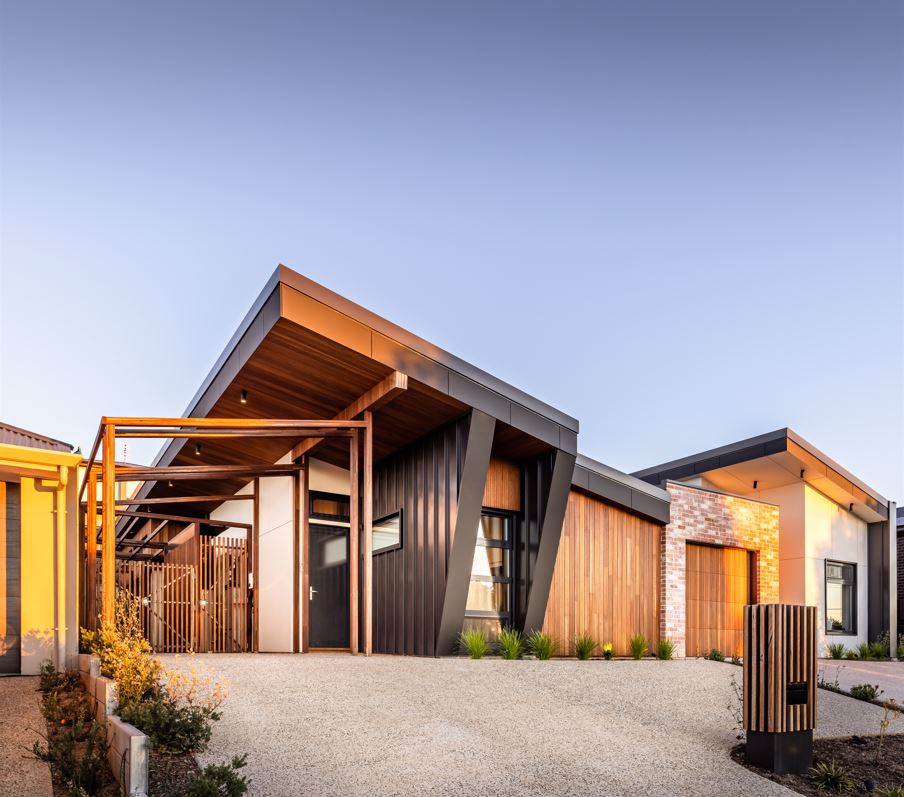
This case study highlights the exceptional air-tightness results achieved for our 10 Star Home in Woodforde, Adelaide, and the role of advanced construction strategies in enhancing energy efficiency, moisture control, and occupant health.
Air tightness is a critical component of high-performance home design, directly influencing energy efficiency, indoor comfort, and building health, durability and longevity. The Woodforde 10-Star Home aimed for world-class airtightness standards, achieving remarkable results in its blower door tests (BDT):
- Initial BDT (at lockup stage): 0.7 ACH @50Pa
- Final Air Tightness Rating: 0.6 ACH @50Pa (Passive House Standard)
To put these figures into perspective:
- The international Passive House standard is 1 ACH @50Pa.
- Typical Australian homes range between 10-20 ACH @50Pa.
- The Building Code of Australia (BCA) is moving towards a national standard of 5 ACH @50Pa.
The results of 0.6 ACH @50Pa place this home in an elite category of air-tight, energy-efficient buildings, reducing air leakage and ensuring enhanced thermal comfort.
We noted several key factors that contributed to the outstanding air tightness results of the 10-Star Home:
- Precision Detailing & Problem Solving:
- The SUHO team were meticulous in their attention to detail and minimised thermal bridging.
- Continuous air barrier systems were incorporated into the design to prevent air leakage.
- Advanced Documentation & Coordination:
- Rigorous documentation and coordination ensured that airtightness principles were embedded throughout the design and construction process.
- Air Tightness Testing at Lockup Stage:
- A blower door test (BDT) was conducted at the lockup stage of the build to identify any air leak areas that could be amended or mitigated later in the construction.
- This thorough and proactive approach helped refine construction strategies, contributing to the final air tightness result after the build was completed.
- WUFI Modelling for Moisture Control:
- The project included WUFI modelling to analyse and manage moisture and condensation risks.
- Strategies were implemented to prevent condensation buildup, protecting the home’s structural integrity and ensuring a healthy indoor environment for occupants.
- Use of High-Performance Materials:
- Triple-glazed windows and airtight sealing solutions were integrated into the building envelope.
- Reverse brick veneer construction enhanced insulation and minimised energy loss.
Achieving such a high level of air tightness offers numerous benefits:
- Energy Efficiency: Reduced heating and cooling demands, leading to significantly lower energy costs.
- Indoor Air Quality: Prevention of drafts, pollutants and mould, ensuring a healthier living environment.
- Comfort & Thermal Stability: Consistent indoor temperatures with minimal reliance on mechanical heating and cooling.
- Building Longevity: Controlled moisture levels reduce the risk of mould growth and structural damage over time.
From research conducted by the team in 2020, this home is believed to be the first Certified 10-Star Home in Australia to achieve an air tightness level of 0.6 ACH @50Pa. The combination of high-performance building envelope strategies, rigorous testing, and attention to detail has set a benchmark for sustainable home construction in Australia.
The Woodforde 10-Star Home exemplifies the future of sustainable housing, showcasing how exceptional energy efficiency and superior air tightness are achievable through careful design, innovative construction strategies, and close collaboration. The project serves as a blueprint for future developments as Australia moves towards more stringent energy and airtightness standards in residential construction.


